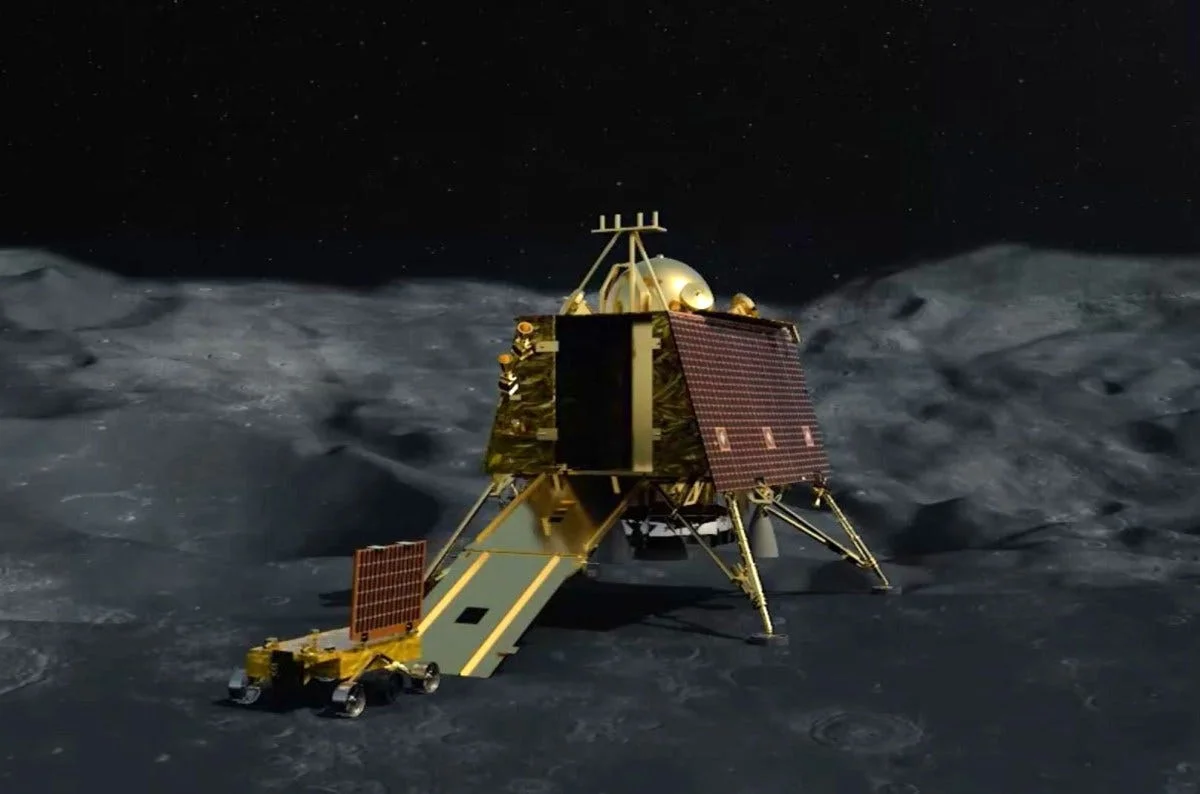Indian Space Research Organisation (ISRO) has realized a momentous feat by successfully landing its Chandrayaan-3 Vikram lander on the moon, thereby establishing India as the first nation to reach the lunar south pole. This significant milestone comes as a testament to India’s prowess in space exploration and technological innovation.
The Vikram lander, a pivotal component of the Chandrayaan-3 mission, achieved a precise landing on the lunar surface, marking a triumph shortly after a Russian lunar probe encountered a crash in the same region. This achievement highlights the meticulous planning and execution that ISRO has undertaken to ensure the success of its lunar exploration endeavors.
The Chandrayaan-3 mission, aptly named, which translates to “moon craft” in Sanskrit, embarked on its extraordinary journey on July 14 from the Sriharikota launchpad in southern India. This launch was a culmination of scientific dedication and technical ingenuity that ISRO has consistently demonstrated throughout its history.
Comprising an indigenous Lander module (LM), a Propulsion module (PM), and an advanced Rover, Chandrayaan-3 has been meticulously designed to explore, analyze, and showcase cutting-edge technologies vital for interplanetary missions. This mission is poised to expand our understanding of the moon’s geology and provide valuable insights into its composition and history.
A poignant aspect of this achievement is the homage paid to Vikram Sarabhai, often hailed as the visionary founder of the Indian space program. By naming the lander after him, ISRO not only pays tribute to his legacy but also underscores the importance of his contributions in shaping India’s space exploration journey.
The Vikram lander’s remarkable capabilities include the ability to execute a gentle landing at a predetermined lunar location. Subsequently, the Rover is deployed to conduct in-situ chemical analyses of the moon’s surface during its traverses. This scientific investigation promises to unravel mysteries hidden beneath the lunar soil and contribute to our understanding of celestial bodies.
India’s approach to space exploration is particularly notable due to its cost-effectiveness. The Chandrayaan-3 mission, which comes at a cost of $74.6 million, stands as a remarkable example of frugal yet highly efficient space engineering. In an era of escalating space mission costs, India’s ability to achieve such feats on a relatively modest budget showcases its resourcefulness and innovative thinking.
Experts attribute India’s ability to maintain low costs to its adept utilization and adaptation of existing space technology. Additionally, the country benefits from a robust pool of highly skilled engineers who contribute their expertise to the space program at a fraction of the cost incurred by their international counterparts.
India’s impressive space achievements extend beyond lunar exploration. The nation made history in 2014 by becoming the first Asian country to launch a satellite into Mars’ orbit. Looking ahead, ISRO has ambitious plans to launch a crewed mission into Earth’s orbit within the next year, demonstrating India’s continuous commitment to pushing the boundaries of space exploration.
In conclusion, ISRO’s successful landing of the Chandrayaan-3 Vikram lander on the moon’s south pole marks an indelible moment in India’s space exploration journey. The mission showcases the nation’s ability to combine scientific acumen, technological innovation, and cost-effective strategies to achieve remarkable milestones in space exploration. As India continues to carve its path among the stars, the world watches with anticipation and admiration for the future discoveries and accomplishments that await.




